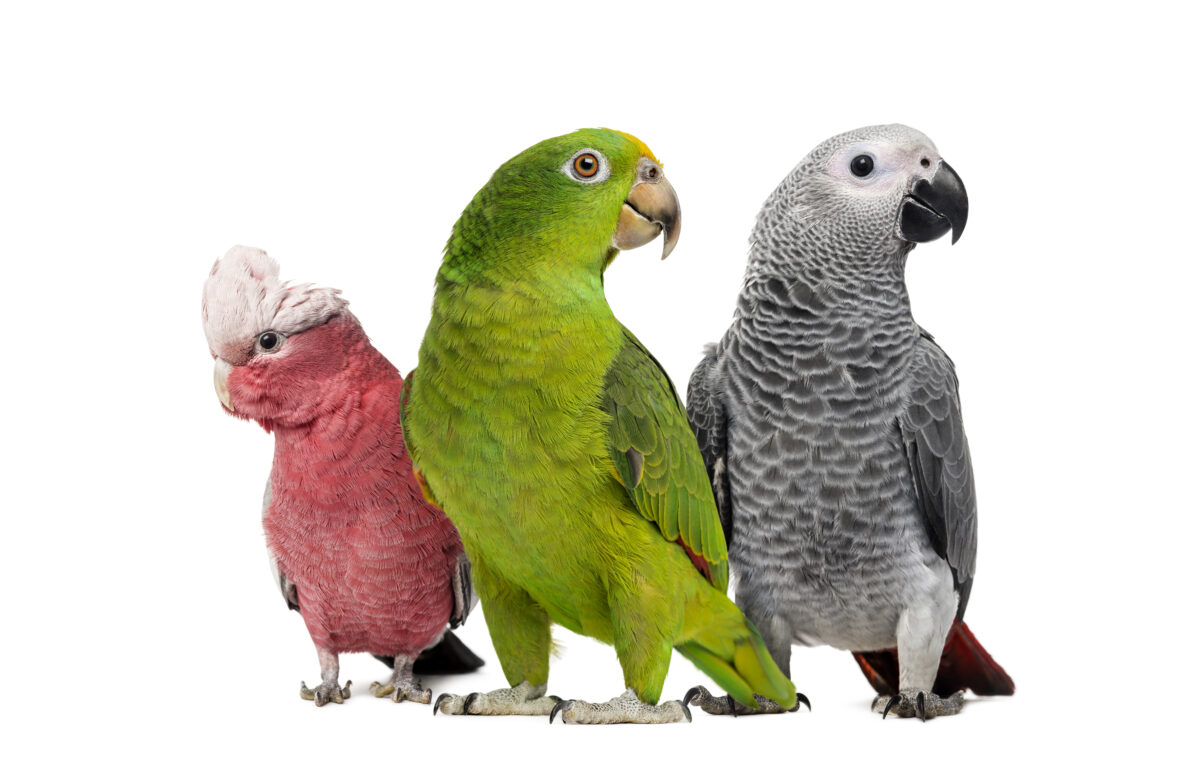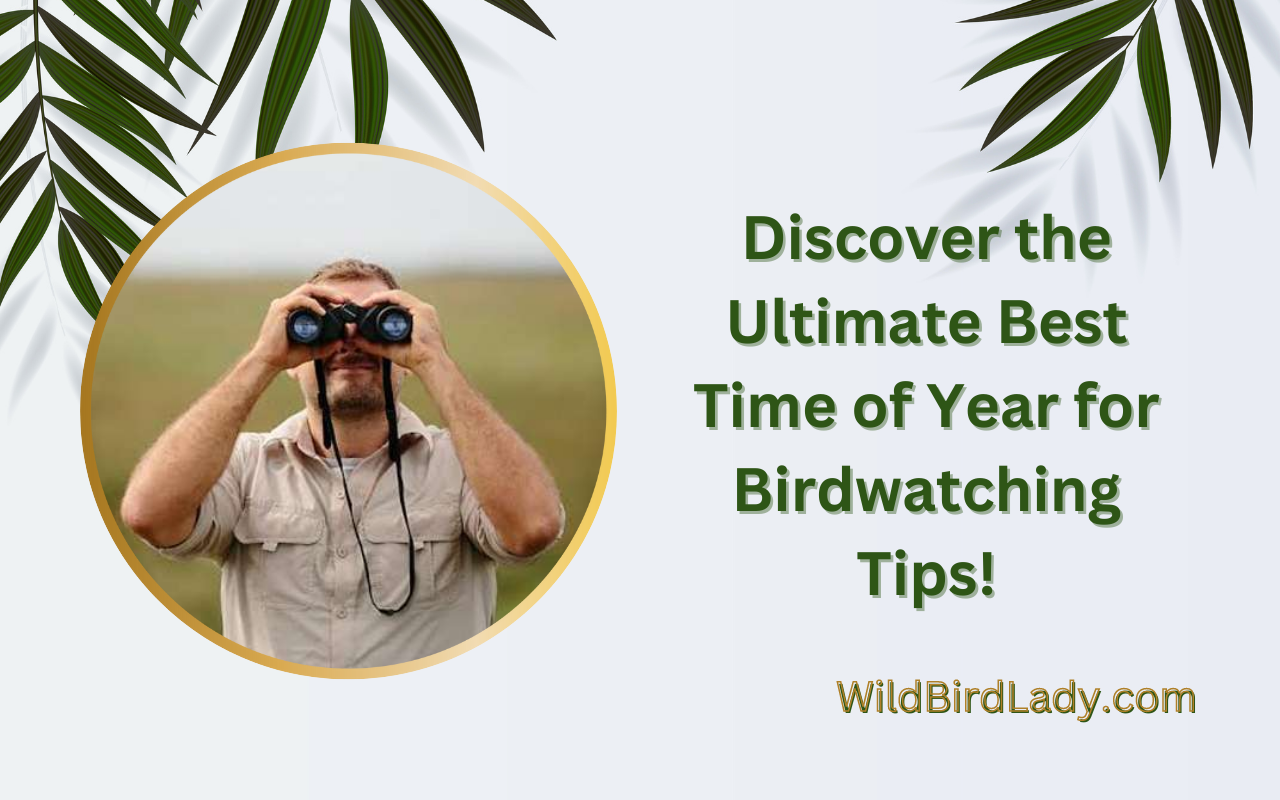The best time of year for birdwatching is during spring and fall migration. During these times, a wide variety of bird species can be seen as they travel to and from their breeding grounds.
The mild weather and abundance of food sources make these seasons ideal for both casual and experienced birdwatchers. Birdwatching, also known as birding, is a popular hobby among nature enthusiasts of all ages. It allows one to observe these fascinating creatures in their natural habitat, gaining an appreciation for their behaviors and habitats.
While birdwatching can be enjoyed year-round, there are certain times of the year that are particularly rewarding. Spring and fall migration are the best times to catch a glimpse of a wide variety of bird species as they travel to and from their breeding grounds. With the mild weather and abundant food sources, it’s an ideal time for both casual and experienced birders to explore the outdoors and witness the beauty of these feathered creatures.

Credit: www.fearfreehappyhomes.com
Seasonal Bird Watching
Bird watching is a wonderful opportunity to escape the monotony of city life and explore the beauty of nature. It is the perfect activity for those looking to get in touch with nature and take in the sights and sounds of the outdoors.
But, what is the best time of year to go bird watching? Let’s explore the seasonal bird watching tips.
Spring Birdwatching Tips
Spring is a fantastic time to go birdwatching. Many species return to their breeding areas, and their songs fill the air. Here are some tips:
- Early mornings are the best time to go bird watching as birds are most active during that time.
- Visit wetlands, as they are home to many species of birds during the spring.
- Look for birds that are actively building nests or courting to observe their behaviors.
- Keep an eye out for migratory birds as they will be making their way back from their wintering grounds.
Summer Birdwatching Tips
Summer is an excellent time to continue bird watching, with longer days and warm weather making it an enjoyable activity. Here are some tips:
- Seek out woodland areas as they provide excellent cover and shelter for birds.
- Look for species that thrive in hot weather, such as swallows and swifts.
- Visit areas with water bodies, as they provide habitat for many water birds.
- Attend bird watching festivals and events that take place during the summer months.
Fall Birdwatching Tips
As the leaves begin to turn and temperatures start to cool, birdwatching can still be a great activity. Many bird species are getting ready to migrate, so it’s an excellent time to observe their behavior. Here are some tips:
- Look for birds that are beginning to gather in flocks, as they may be getting ready to migrate.
- Focus on forested areas where different bird species gather to forage for insects and berries.
- Check out flyways and rest areas where many migrants stop to feed and rest before continuing their journey.
- Consider using field guides and apps to identify different species of birds.
Winter Birdwatching Tips
Winter may seem like a challenging time for birdwatching, but it can actually be quite rewarding. Here are some tips:
- Focus on woodland areas as they provide excellent habitat for birds during the winter.
- Look for winter birds such as the snowy owl, ruffed grouse, and boreal chickadees.
- Check out local bird feeders and provide food for birds in your backyard.
- Join local birdwatching clubs or participate in citizen science programs to learn more about winter birds.
Bird watching is a year-round activity that offers many opportunities to explore and appreciate the natural world. By following these seasonal bird watching tips, you can make the most of each season and enhance your bird watching experience.
Regional Differences
Factors That Affect The Ideal Time For Birdwatching In Different Regions
The best time for birdwatching can vary greatly depending on the region. Factors such as climate, migration patterns, and breeding seasons all play a crucial role in determining the optimal time to observe birds in each area. Here are some essential points to consider when planning your birdwatching trip:
- Climate: The weather is a vital factor in birdwatching, as it can determine which species are present and active at certain times of the year. In tropical areas, birds tend to be active year-round, while in colder climates, many birds are present only during the breeding season in spring and summer.
- Migration patterns: For many bird species, their migration can determine when they are present in certain regions. Early spring and late summer are often good times to observe migrating birds.
- Breeding seasons: Spring and summer are usually the best times to observe breeding behavior, such as courtship displays and nesting activities. During this period, it’s essential to avoid disturbing the birds, as they may abandon their nests.
- Time of day: In some regions, the best time for birdwatching is early morning or late afternoon when birds are most active. Other areas may have birds active throughout the day.
Tips For Choosing The Best Time Of Year For Birdwatching In Different Regions
To get the most out of birdwatching, it’s crucial to plan your trip based on the factors that affect bird behavior in a particular area. Here are some tips to help you choose the best time of year:
- Research the area: Before planning your trip, research the area’s key bird species and their typical behavior and habitat.
- Determine your target bird: If you have a particular bird species in mind, research its behavior and migratory patterns to determine the optimal time for observation.
- Consult local birdwatching guides: Local guides can provide valuable insights into the best times and locations for birdwatching in a particular region.
- Check weather patterns: Keep an eye on the weather forecast and plan your trip accordingly to take advantage of optimal weather conditions.
- Be patient: Observing birds in their natural habitat takes patience and perseverance, so be prepared to spend enough time in the area to increase your chances of seeing your target species.
- Respect the birds: When observing birds, remember to keep a safe distance and avoid disturbing them, particularly during breeding seasons. Leave the area as you found it, minimizing any impact on the birds’ environment and avoiding littering.
By taking the time to research and plan your birdwatching trip, you can enjoy the rewards of observing these magnificent creatures in their natural habitats.
Equipment And Preparation
Birdwatching is a fascinating hobby that requires patience and passion. Watching birds in their natural habitats can bring a sense of calm and connect one with nature. However, it requires the right equipment and preparation. In this blog post, we will highlight essential equipment and preparation tips for successful birdwatching.
Essential Equipment For Successful Birdwatching
Without the correct equipment, birdwatching can be frustrating and unproductive. Below are some of the necessary items to have on hand to make the most of your birdwatching experience:
- Binoculars: A good pair of binoculars is essential for birdwatching. Make sure to choose a model with a magnification of at least 8x and an objective lens of 32mm or more for better visibility.
- Field guide: A field guide helps in identifying different bird species and provides information about their habitats, behaviors, and sounds.
- Camera: A camera with a telephoto lens can help capture great shots of birds from a distance. Make sure to turn off any artificial sounds that could scare birds away.
- Birdfeed and water: To attract birds to your location, provide them with feed and clean water in advance.
Preparation Tips For Birdwatching
Birdwatching involves spending time in nature, observing birds from a distance, and respecting their habitats. Below are some tips to help you prepare for your birdwatching adventure:
- Choose the right location and time: Research the best time and location to watch specific bird species and choose a suitable time of day, preferably early in the morning or in the late afternoon.
- Dress appropriately: Wear comfortable clothing that blends with the environment. Avoid bright colors and wear comfortable shoes suitable for walking in natural landscapes.
- Get informed about the terrain: Check the weather forecast and prepare accordingly. If the terrain is rugged, wear appropriate footwear, and bring extra protection from the elements.
- Respect the birds and their habitats: Keep a safe distance from the birds and avoid disturbing them. Never remove anything from their habitat or create disturbances.
Birdwatching is a fun and educational activity that can be enjoyed individually or with a group. Remember to bring the right equipment and prepare accordingly to make the most out of your birdwatching experience. With these essential equipment and preparation tips, you’re ready to start your birdwatching adventures.
Frequently Asked Questions On Best Time Of Year For Birdwatching
What Is The Best Season For Birdwatching?
The best season for birdwatching is in spring when birds start migrating back from their winter home, the weather is mild, and vegetation is budding. Fall is also excellent for spotting birds as they return south.
What Are The Essential Equipment For Birdwatching?
Binoculars are the most critical tool. A field guide is also needed to identify birds. Dressing appropriately with earth-tone colors and good hiking shoes are also essential. A camera is an excellent addition for taking pictures and documenting your sightings.
Where Are The Best Places For Birdwatching?
National parks, bird sanctuaries, and forests are great places to go birdwatching. Common types of birds that are easy to spot include blue jays, cardinals, hummingbirds, and sparrows. Nature trails and wooded areas with water sources are also excellent places to find various birds.
Conclusion
As we conclude our discussion on the best time of year for birdwatching, it’s evident that each season has something unique to offer to bird enthusiasts. Whether it’s witnessing the migration of birds in the spring or enjoying the colors of birds during the breeding season in summer, birdwatching can be a year-round activity.
While winter may not be the best time to spot a wide variety of bird species, it’s still possible to catch glimpses of birds that reside in cold climates. Fall is an especially exciting season for birdwatching due to the migration of many bird species.
By planning your birdwatching trips according to the seasons, you can make the most out of your experience and enjoy the diversity of birds that nature has to offer. So, grab your binoculars and venture out to explore the feathered wonders of our world.
Happy birdwatching!
Latest Posts
The Ultimate List: Top 8 Best Birdwatching Podcasts for Avid Birders
Looking for the top birdwatching podcasts? Here are the eight best options to tune into today! Birdwatching can be a thrilling, immersive experience that brings...
Stop Squirrels in Their Tracks: 10 Effective Ways to Safeguard Your Bird Feeder Pole
To prevent squirrels from climbing your bird feeder pole, use squirrel baffles and slippery poles. Here are ten effective ways to keep squirrels from stealing bird food and damaging bird feeders. ...


